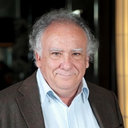[Positive anti-Borrelia antibodies in patients with clinical manifestations compatible with neuroborreliosis].
Keywords
Abstract
The clinical features of 19 patients with neurological manifestations unexplained by another disease and positive serology for Borrelia burgdorferi were studied. ECM was present in only 11% of the cases and 32% referred tick bite. The characteristic features for suspicion of NB according to our series was the presence of polyneuritis in 84% of the cases specially in the form of multiple mononeuritis and involvement of the facial nerve (79%) leading to even greater suspicion with the association of V pair involvement. Seizures, sleep disorders, and higher mental dysfunction may be found in association with other more characteristic neurological features. The typical triad of NB (aseptic meningitis, facial paralysis and polyradiculoneuritis) was found in 21% of the patients and in the absence of another disease to justify the same neuroborreliosis (NB) seemed evident. In all the cases components of this triad were found. Headache, arthralgia, fever and, less frequently, arthritis are other symptoms often past with the presence of anti-BB antibodies. Patients with the shortest evolution most frequently presented antecedents of facial paralysis, sensory alterations and Romberg's sign than patients of longer evolution. CSF demonstrated the presence of pleocytosis in 24% of the cases and in only one patient a slight increase in the intrathecal activity of IgG was observed which may be of use in differential diagnosis with MS. MR showed alterations in 61% of the patients and, while not specific, the lesions present subcortical predominance.


